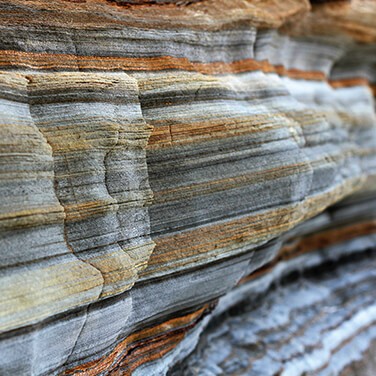Bedrock Revealed as Major Nitrogen Source
By Ralph Birch
A study recently published in Science reveals that nitrogen actually seeps into the soil from bedrock, a source that has been long overlooked.
The theory that nearly all of the plant required nitrogen comes from the atmosphere (and enters the soil via microbes or dissolved in rain) has been commonly accepted. Not only does this finding change our ideas about plant growth and the Earth’s nitrogen life cycle, it may alter climate change models.
“The research community never thought to look at the rocks,” said Benjamin Houlton, a global ecologist at the University of California, Davis and the lead author of the study.
Bigger and Greener
This new information suggests that plants in certain areas may be able to grow larger and at a faster rate than originally thought. Bigger plants are able to absorb more carbon dioxide from the air.
As temperatures rise across the globe, calculating how much carbon dioxide plants consume is becoming increasingly important. The exact amount of absorption remains uncertain, but Houlton notes that plants could provide more of a cushion when it comes to storing carbon pollution.
Previous research assessed the balance between how much nitrogen in sediments reaches the mantle (the layer below the earth’s crust) and the amount from gases released into the atmosphere by volcanoes (which is 78 percent nitrogen).
Learning from the Past
Starting in the 1970s, a handful of studies showed that several types of sedimentary rock contain nitrogen from dead plants, algae, and animals that fell to the sea floor. A few studies suggested the element might leach into soil in certain places, but scientists did not follow up on these findings. As a result, the amount of nitrogen in bedrock was thought to be insignificant.
“It wasn’t entering into the paradigm of how we think the nitrogen cycle works,” Houlton said.
Houlton and his colleagues published a study in a 2011 issue of Nature that found soil in forests that grow above sedimentary rock in parts of California contain 50 percent more nitrogen than in areas with overlying igneous (volcanic) rock. They also found 42 percent more nitrogen in trees growing over sedimentary bedrock.
The new study used California as a model geologic system because the state contains most of the planet’s rock types. Houlton and his team measured nitrogen levels in nearly 1,000 Californian samples and in others from around the world. With the results, they developed a computer model to calculate how quickly rocks break down and release nitrogen into the soil.
“Our study helps to resolve that gap between what the observations were saying and what the models were predicting,” Houlton said.
